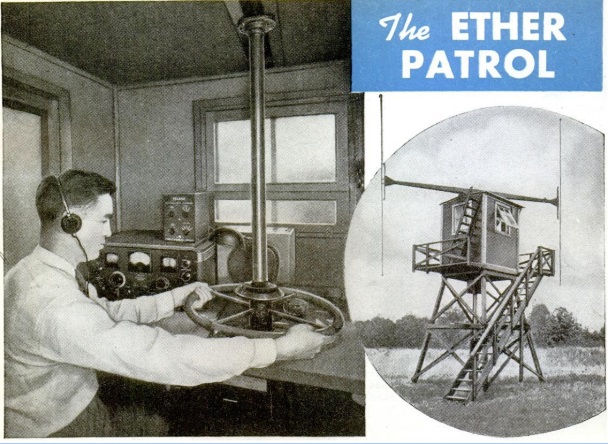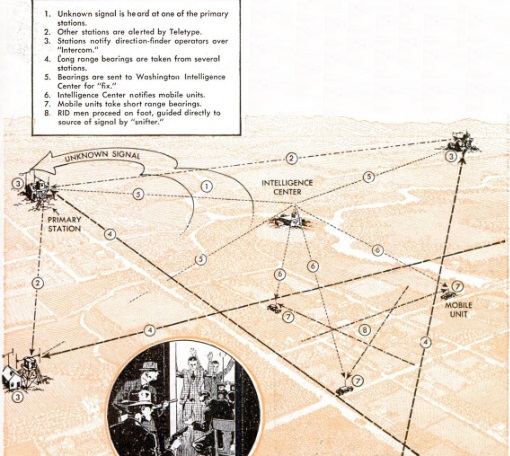 Shown above, from the November 1944 issue of Popular Mechanics, is one of the operators at an FCC Radio Intelligence Division monitoring stations. He was rotating an antenna capable of narrowing down the incoming signal to one degree, in order to track down a clandestine transmitter somewhere in the U.S., or even abroad.
Shown above, from the November 1944 issue of Popular Mechanics, is one of the operators at an FCC Radio Intelligence Division monitoring stations. He was rotating an antenna capable of narrowing down the incoming signal to one degree, in order to track down a clandestine transmitter somewhere in the U.S., or even abroad.
The majority of operators were hams, and they had the procedure down to a science. They scanned the bands looking for unfamiliar signals. As soon as an unknown station was heard at one station, other stations were immediately notified by teletype and took bearings. Those bearings were then sent to Washington for a fix. At that point, one of 50 mobile units was notified, and would sniff out the transmitter. Finally, an RID man would find the exact location on foot. And as shown below, they would then raid the offending location, presumably with FBI men accompanying with the machine guns.
Before the war, there was little need for such extensive monitoring. But from 1940 to the date of the article, over 9000 cases of unlicensed and subversive transmitters had been spotted. Over 200 spies had been rounded up in South America thanks to RID bearings.
Some transmissions were high speed code, but the stations were equipped with recording devices, and transmissions could be played back at a lower speed. The stations were also invaluable for locating downed aircraft, both military and civilian.

